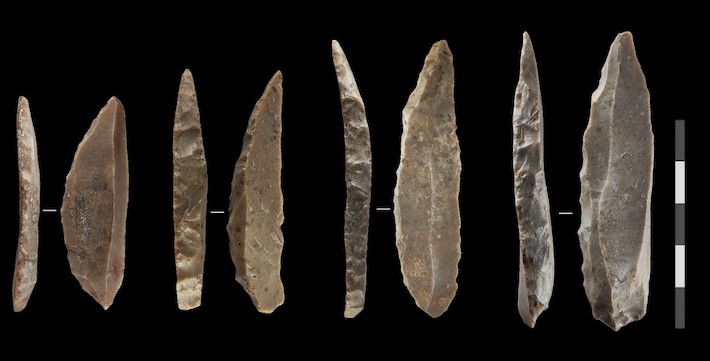 LEIDEN, THE NETHERLANDS—According to an AFP report, Igor Djakovic of Leiden University and his colleagues collected data from 28 Neanderthal bones and artifacts and 28 modern human bones and artifacts unearthed at 17 sites in France and northern Spain and used that information in computer models to estimate when the two species might have come into contact with each other. Optimal linear estimation, a modeling technique adapted from biological conservation sciences, and statistical analysis suggest that modern humans arrived in the region around 42,500 years ago, while Neanderthals disappeared from the area between 40,870 and 40,457 years ago. The researchers therefore concluded that the two species lived alongside each other for 1,400 to 2,900 years. During this time, Djakovic explained, tools made by Neanderthals began to look more like those crafted by modern humans. This may be the result of the mixing of the two species, he said, and the absorption of Neanderthals into the larger modern human population. To read about possible intentional Neanderthal burials, go to "Around the World: France."
LEIDEN, THE NETHERLANDS—According to an AFP report, Igor Djakovic of Leiden University and his colleagues collected data from 28 Neanderthal bones and artifacts and 28 modern human bones and artifacts unearthed at 17 sites in France and northern Spain and used that information in computer models to estimate when the two species might have come into contact with each other. Optimal linear estimation, a modeling technique adapted from biological conservation sciences, and statistical analysis suggest that modern humans arrived in the region around 42,500 years ago, while Neanderthals disappeared from the area between 40,870 and 40,457 years ago. The researchers therefore concluded that the two species lived alongside each other for 1,400 to 2,900 years. During this time, Djakovic explained, tools made by Neanderthals began to look more like those crafted by modern humans. This may be the result of the mixing of the two species, he said, and the absorption of Neanderthals into the larger modern human population. To read about possible intentional Neanderthal burials, go to "Around the World: France."
Model Explores Modern Human Contact With Neanderthals
